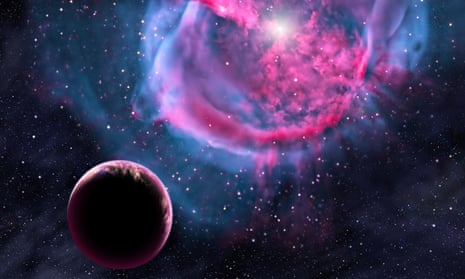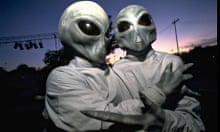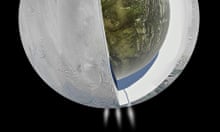An alien world that orbits a distant star in the constellation of Lyra may be the most Earth-like planet ever found outside the solar system.
The planet, named Kepler 438b, is slightly larger than Earth and circles an orange dwarf star that bathes it in 40% more heat than our home planet receives from the sun.
The small size of Kepler 438b makes it likely to be a rocky world, while its proximity to its star puts it in the “Goldilocks” or habitable zone where the temperature is just right for liquid water to flow.
A rocky surface and flowing water are two of the most important factors scientists look for when assessing a planet’s chances of being hospitable to life.
Kepler 438b, which is 470 light years away, completes an orbit around its star every 35 days, making a year on the planet pass 10 times as fast as on Earth. Small planets are more likely to be rocky than huge ones, and at only 12% larger than our home planet, the odds of Kepler 438b being rocky are about 70%, researchers said.
Scientists at the Harvard-Smithsonian Center for Astrophysics announced the discovery at a meeting of the American Astronomical Society in Seattle on Tuesday, along with seven other planets that also lie in the habitable zones of their stars. The haul doubles the number of small planets – those less than twice the size of Earth – believed to be orbiting in their parent stars’ habitable zones.
All were spotted with Nasa’s Kepler space telescope which detects planets as they move across the faces of their stars, causing the light picked up by the telescope to dim periodically by a minuscule amount.
One of the other planets, Kepler 442b, lies in the same constellation 1,100 light years away. It is about a third larger than Earth, receives about two thirds as much starlight, and has a 60% chance of being rocky, according to a report to be published in The Astrophysical Journal.

Guillermo Torres, lead author on the study, said the size and amount of light falling on the planets made them the most Earth-like planets yet found beyond our solar system. Before their discovery, the exoplanets most similar to our own were Kepler 186f, which is 10% larger than Earth and receives a third as much light, and Kepler 62f, which is 40% larger and gets about 41% as much light.
The scientists do not know if the planets have atmospheres, but if they are cloaked in insulating layers of gas, the mean temperatures of Kepler 438b and 442b are expected to be about 60 and zero degrees Celsius respectively.
The Harvard-Smithsonian team used a computer program called Blender to confirm that the planets originally spotted by the Kepler space telescope were real. False sightings can happen when pairs of stars that lie behind the one being studied eclipse each other, causing the background light to dim slightly. In some cases, this can be mistaken for a planet moving in front of its star.
“The pair of stars can be way behind the target star, but if they are in the same line of sight, the result is a very tiny dimming that can look like a planet,” said Torres.
The Blender program gives a statistical probability that the planet is real and not an effect of background stars eclipsing one another. Of 12 suspected planets Torres and his colleagues assessed with the program, 11 came out at more than 99.7% likely to be real.
David Kipping, a co-author on the study, said that Kepler 438b and 442b were “as close to Earth analogues as we’re going to find in the Kepler data”.
Astronomers are keenly waiting on the next generation of telescopes, including Hubble’s replacement, the James Webb Space Telescope, and the European Extremely Large Telescope, which is being built in the Atacama desert in Chile, to help them examine the atmospheres of distant planets for signs of life.
In the meantime, scientists plan to look for other, indirect signs, that a planet may be well-suited for life. Kipping is searching through the Kepler data for hints that some planets have moons, which can improve their odds of being habitable. Our own moon stabilises Earth’s tilt, making the temperatures far less erratic than they would be otherwise. Alien planets that share a solar system with a gas giant like Jupiter are also interesting, because the vast size of the planet acts as a shield against devastating asteroid and comet impacts.





Comments (…)
Sign in or create your Guardian account to join the discussion